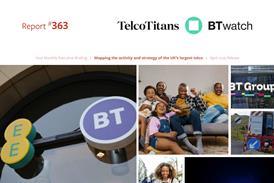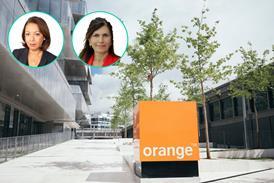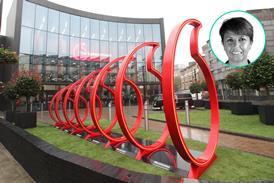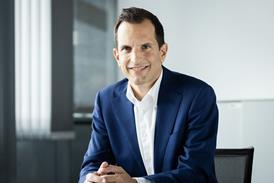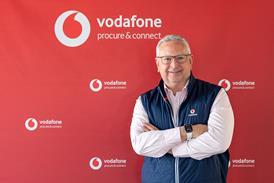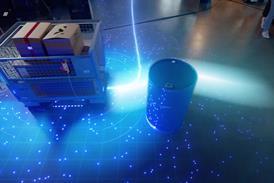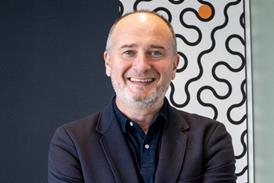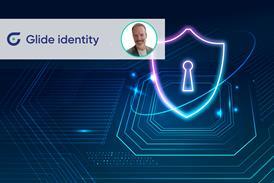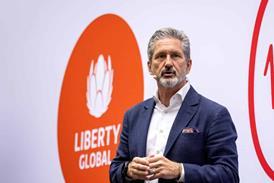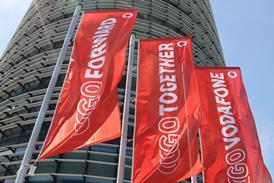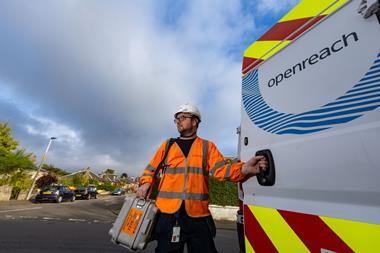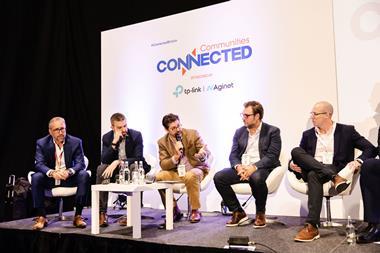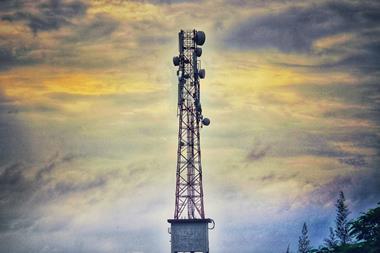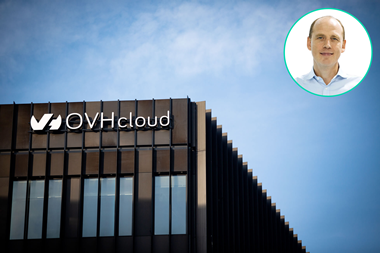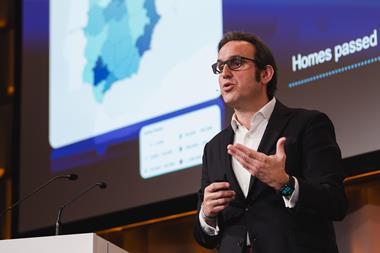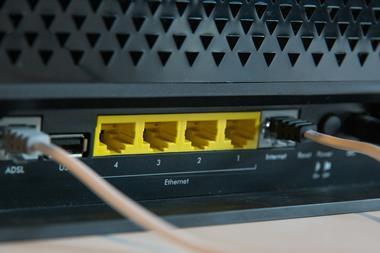- Michel Chbat outlines Nokia’s view of the neutral host market, in an exclusive interview with TelcoTitans’ Infrawatch.
- Nokia positioned ahead of the curve in burgeoning segment, where key new facets include new business models, private finance influence, and ESG-supportive densification.
- Chbat asserts the time is right for neutral host model, with customers seeking solutions that bring greater efficiency and simplicity to managing networks, and reduce pressure on overstretched telecoms infrastructure.

In this article
1. Opportunity Noks — playing the long game2. Helping with the maths — early-mover mandates
3. Inner city pressure — the time for densification is now
4. A game-changer at both ends of the field — the Wayne Gretzky play
5. Model mayhem — there’s no one size fits all
6. Being pro-active on active — but there are commonalities and crossover
7. Easy does it — infra investors want things different
Opportunity Noks
The rise of neutral hosts — infrastructure owners that have built, acquired, or inherited assets for multi- rather than sole-tenancy usage — has not only been something mobile network operators and broadband service providers have had to wrap their heads around.
Their suppliers are also being forced to think hard about what this trend brings in terms of opportunities and downside exposure.

For the past two years, this challenge has been the one facing Michel Chbat, Head of Global Strategy Execution for Customer Experience at Nokia. Based out of Paris, he has been tasked with the formulation and realisation of the vendor’s go-to-market strategy for neutral host players.
This has taken Chbat into uncharted territory, as few traditional telecoms vendors have yet to make a major push into this new and evolving area — but the rewards could be sizeable if his team sets out the right course.
“ We must be attuned to the dynamics of this fast-moving domain to ensure our leadership position. We want to have early engagements with all the stakeholders, whether they are infrastructure companies or their investors. We want to understand how they think. ”
Chbat.
Nokia, Chbat says, has long had a close eye on how infrastructure ownership and investment is being reshaped across the telecoms market, including the vast amount of private capital flowing into comms assets and widespread separation of passive infra by communications service providers, as they look to cash in and boost balance sheets.
Chbat’s latest role, which began in May 2021, was to formalise how Nokia should position itself in the area by putting together a strategy for engagement with (and “incubation” of) neutral host clients.
Helping with the maths
Nokia sees various positives from being an early mover in the market for neutral host-focused products and services, both for defence and attack.
In terms of upside opportunity, Chbat notes that demand for solutions is already being driven by the internal change programmes underway at many infra business clients.
Whether focused on wireless, wireline, or other digital assets, numerous infra providers remain busy behind the scenes, working to overhaul clunky practices and processes that were prevalent when they were a mere backstage function under telco management.
They are also being compelled to respond to fresh demands from new private equity owners that are much more laser-focused on efficiency and effectiveness.
“ We want to be a trusted partner to these infrastructure companies because they are transforming. Each one of them is transforming at a different pace and taking a different path, but, one way or the other, they are transforming and we want to be there. ”
Chbat.
Inner city pressure
Looking forward, Chbat says Nokia’s view is that the digital infra market is set for acceleration, saying it will “generate significant business for us, even if we have to change our focus a little bit”.
Proponents effectively suggest that neutral hosts’ time has arrived, pointing to increasing pressure on telecoms infrastructure resource, both from rapidly growing demand for data capacity and the rising cost (financial and environmental) of powering networks.
Chbat also points out that shared or open access setups are especially interesting in cities because they enable infra owners to “do more with less equipment” in an environment where resource is particularly constrained.
“ The one area where this model becomes very important from the environmental aspect is in the metropolitan areas because networks need to be densified. They need to be densified for two reasons. One is the growth of data — more and more data means you need to have more radios. And the second one is that the newer radio technologies run at higher frequencies and higher frequencies mean denser networks.
So now the cities are confronted by [the need for network densification] from one side, and, on the other, by the environmental commitments that they have made.
So how do you conciliate these two? The neutral host model is a straightforward solution: mutualise the equipment or allow equipment sharing. That’s a win–win proposition for everyone. Of course, it’s easier said than done, but it’s something that the cities now are looking very much toward. ”
Chbat.
A game-changer at both ends of the field
As with any fundamental shift in a market, established telecoms vendors will have worries over whether the growth of neutral hosts could cannibalise existing lines of business with valuable, long-time customers, and have a balancing act to perform when it comes to deciding where to allocate investment.
Chbat is nonetheless adamant that Nokia needs to lean into the digital infra space — and not be caught out by the pace and scale of changes taking place.
He cites AT&T’s recent move to tie with BlackRock on Gigapower, a new US fibre joint venture, as a marker of how changes that would have been unthinkable five years ago are now occurring on a regular basis — and require vendors to be even more cognisant of the exposure that could accompany infra asset reshaping by telco clients.
This inertia ‘downside’ aspect could be even more significant than the proactive upside component when it comes to market share development, Chbat asserts.
“ Digital infra is still not a huge part of our business but what we need to keep in mind is, if the market is really transforming and growing, and the business is moving from one entity to another entity, we need to make sure to be there.
This business will likely bring upside and the neutral host business will generate some new types of domains that we probably have not thought about yet. But even regardless of that, Nokia needs to be carefully watching the transformation in this market because the world is changing. ”
Chbat.
Model mayhem
Despite the various push and pull factors that are compelling established telco vendors to enter the neutral host market, cheerleaders within these organisations do not face an easy task when attempting to secure management backing.
On one front, Chbat notes that the process is not a cost-neutral exercise as it requires some investment in R&D and commercial functions (via product and sales approach changes).
On another, digital infra is a fast-evolving and complex environment, making development of the business case more challenging.
Further, there are already hundreds of infrastructure owners playing in the network-as-a-service space and focusing on driving growth around multi-tenancy opportunities. Trickily, they are all following different strategies and timeframes when it comes to go-to-market — thus adding further challenge to influencing their decision making on strategy, and (by extension) their spend on vendors’ technology.
There are always common threads, too.
“ There are many categories of neutral hosts, but all in all, they are infrastructure owners, either operating a multi-tenant model or preparing to operate in a multi-tenant role. ”
Chbat.
Being pro-active on active
As Chbat notes, infra players’ commercial strategies often trace back to the nature of how the business originated (e.g. whether formed from a NetCo–ServCo split, acquisition, or startup), ownership model (consolidated, joint venture, or partnership — between either industry or financial partners), and commercial start point (e.g. whether bound, at least temporarily, by an anchor tenancy contract).
In the fibre space, for example, ‘open access’ models are prevalent — although not universal. These are often linked in with the regulatory environment surrounding the InfraCo, especially in the case of businesses spun out of national telcos. Danish wireline infra player TDC Net, for instance, continues to serve many third-party ISP clients following a separation and spinoff process from TDC Group in 2019–2021. Meanwhile, AT&T is expected to call the shots on where and when Gigapower invests in network rollout, at least for some time to come.
In the tower and data centre spaces, there is less of an open access tradition, and providers tend to have tighter rules of engagement for tenants that sign up to use their infrastructure. But things are evolving, and in the wireless infra market, some TowerCos are now widely expected to broaden out their customer bases further by expanding beyond physical infra and into network services based on active equipment. This, in turn, puts them right in their former MNO parents’ domain.
Chbat notes that this wireless model is still “in its infancy”, but acknowledges that a “good number of TowerCos are exploring it”, highlighting Cellnex’s acquisition of both active and physical assets when it absorbed Polkomtel’s infra estate in 2021, and the Spanish provider’s emphasis on a more rounded offering as part of its Augmented TowerCo strategy.
It is important for Nokia to “engage with the variety of customers who are exploring going into the active domain”, Chbat says.
“ Depending on which infrastructure company you talk to, they are at a different point in their transformation. Some of these providers think of business diversification as ‘going beyond’ the tower business and deploying passive systems in indoor locations — ‘getting out’ of their bread-and-butter business, which is renting space on their towers.
There are others who have pushed this thinking much further ahead. That means to start going into the active domain. And that’s the piece that we see as the most interesting by far. ”
Chbat.
Chbat notes that adoption of active kit brings a fundamental change to the typical TowerCo business model, including via a new level of commitment and exposure.
This changes the dialogue with vendors significantly, too.
“ A question we get a lot is ‘how do I reduce the risk [of adoption of active services]?’ Because, if you look at the standard model of a TowerCo, it’s a real estate model: long-term contracts; low risk; steady returns; very clear sets of clauses in the contracts.
Once you start getting into the active part, then you’re introducing some commercial risk because now there is an active service to be provided. There is equipment — active equipment that could fail. These are not long-term contracts, so the entire way these companies are used to working changes. It’s a whole different ball game so the conversation is different. ”
Chbat.
Easy does it
With InfraCos focused on long-term predictability, in terms of cost and returns, Nokia’s approach so far has been to focus on offerings that bring greater simplicity to managing networks.
Having taken over service provider assets, infra players do not necessarily demand any majorly new categories of technology, Chbat says. But their mindset is very different when it comes to taking on operating expenditure and complexity — and they are especially keen to acquire solutions for serving multiple tenants in the simplest possible way.
One of the main products Nokia is targeting at neutral host players, therefore, is its Altiplano line of programmable access control applications for broadband infrastructure providers, which is in use at clients such as American Tower, Finland’s Valoo, and Australia’s nbn.
“ At Nokia, we’re putting our best foot forward to understand the specificity of this domain. Digital infra businesses are not asking for fundamentally new products, but they’re asking for simplicity because they don’t want to overburden themselves from the operational aspect. They don’t have a lot of operational resources.
The CSPs can afford to do that because they’re shooting for the absolute best network that they can possibly have. It’s really about the total cost of ownership because, no matter how you look at it, they’re going to build the network.
The InfraCos don’t see the world like this. They ask ‘is it a good investment for me?’ and ‘am I going to get good returns or not?’. So they look for solutions that are simple. ”
Chbat.
With differentiation comes the opportunity to make an early mark on a domain that is transforming, bringing both risk and opportunity, he reiterates.
“ We see more and more service providers sharing network assets and sharing network infrastructures. This brings opportunities. But we also have to reckon with the fact that the world is changing, essentially. This is not our CSP-slash-enterprise world — the way we know it. It’s slowly changing, but it is changing. ”
Chbat.





